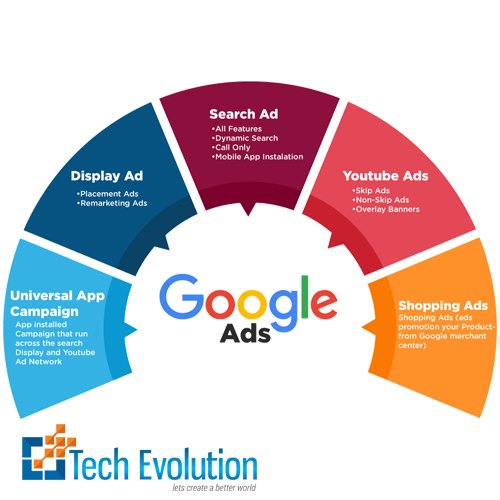Google Ads: Revolutionizing Online Advertising
 krishna kumar
krishna kumarIn today's digital age, businesses need effective strategies to reach their target audiences. One such powerful tool is Google Ads, an online advertising platform developed by Google. This platform has revolutionized the way businesses advertise on the internet, providing a range of options to target potential customers precisely and efficiently.

What is Google Ads?
Google Ads, formerly known as Google AdWords, is an online advertising service that allows businesses to display ads on Google's search engine results pages (SERPs) and its advertising network. Launched in October 2000, Google Ads has become a cornerstone of digital marketing, enabling businesses of all sizes to promote their products and services effectively.
How Does Google Ads Work?
Google Ads operates on a pay-per-click (PPC) model, meaning advertisers only pay when someone clicks on their ad. The platform offers several ad formats, including:
Search Ads: These appear at the top and bottom of Google’s SERPs when users search for specific keywords.
Display Ads: Visual ads that appear on Google’s partner websites across the internet.
Video Ads: Ads that run on YouTube and other Google Display Network (GDN) sites.
Shopping Ads: Ads that display product images, prices, and business names on SERPs.
App Promotion Ads: Ads designed to encourage users to download or interact with mobile apps.
Targeting and Bidding
One of the most significant advantages of Google Ads is its advanced targeting capabilities. Advertisers can target users based on various criteria, including:
Keywords: Specific words or phrases related to the products or services.
Demographics: Age, gender, parental status, and household income.
Location: Geographic areas, ranging from countries to cities or specific radii around a location.
Device: Type of device users are using, such as mobile, desktop, or tablet.
Interests and Behaviors: Users' interests and online behaviors.
Bidding is another crucial aspect of Google Ads. Advertisers set a maximum bid, which is the most they are willing to pay for a click on their ad. Google Ads uses an auction system to determine which ads appear and in what order. Factors influencing this include the bid amount, ad quality, and relevance to the search query.
Benefits of Google Ads
Measurable Results: Google Ads provides detailed analytics and reporting, allowing businesses to track the performance of their campaigns in real-time.
Cost Control: Advertisers have control over their budgets, with the ability to set daily limits and adjust bids as needed.
Targeted Advertising: The platform's advanced targeting options ensure ads are shown to the right audience at the right time.
Flexibility: Google Ads caters to various advertising needs, from brand awareness to driving sales and leads.
Best Practices for Google Ads Success
To make the most of Google Ads, businesses should follow these best practices:
Keyword Research: Identify relevant keywords that potential customers are likely to use.
Ad Copy Optimization: Craft compelling ad copy that includes a clear call-to-action (CTA).
Landing Page Quality: Ensure the landing pages are relevant, user-friendly, and optimized for conversions.
Regular Monitoring and Adjustment: Continuously monitor ad performance and make necessary adjustments to improve results.
A/B Testing: Experiment with different ad variations to determine what works best.
Conclusion
Google Ads has transformed the advertising landscape by providing a platform where businesses can reach their target audiences with precision and efficiency. Its range of ad formats, advanced targeting options, and detailed analytics make it an indispensable tool for modern digital marketing. Whether you’re a small business owner or a large enterprise, leveraging Google Ads can drive traffic, increase sales, and ultimately grow your business in the competitive online marketplace.
Subscribe to my newsletter
Read articles from krishna kumar directly inside your inbox. Subscribe to the newsletter, and don't miss out.
Written by
